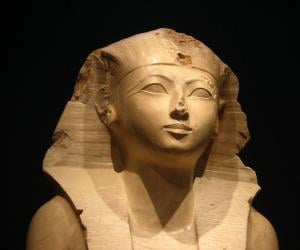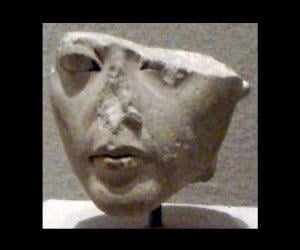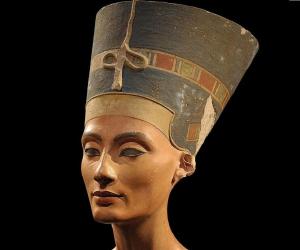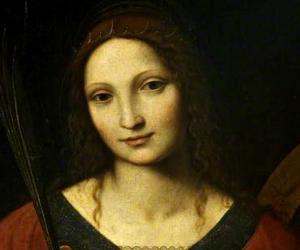Hatshepsut, daughter of Thutmose I, ruled as the fifth pharaoh of the Eighteenth Dynasty of Egypt and was the second female pharaoh, according to records. She was the chief wife of Thutmose II, and ruled jointly with Thutmose III, Thutmose II’s son. She also named herself God's Wife of Amun.
Ankhesenamun was an Egyptian queen and wife of Pharaoh Tutankhamun. Unlike other ancient Egyptian queens, Ankhesenamun's life, especially her youth, is well-documented in the ancient paintings and reliefs of the reign of her parents. As the Great Royal Wife of Tutankhamun, Ankhesenamun may have played an important role in his administration.

Often compared to actor Hedy Lamarr, for her beauty, Fawzia Fuad, the daughter of Fuad I, was an Egyptian princess who later became the empress of Iran, as Mohammad Reza Shah’s first wife. An unhappy marriage led to her divorce, following which she married diplomat Ismail Chirine.
Faten Hamama was an Egyptian actress and film producer. Regarded as an icon in Middle Eastern and Egyptian cinema, Hamama played an important role in popularizing the film industry in Egypt. She is also remembered for stressing the importance of women in the film industry and Egyptian society at large. In 1965, she was awarded the Decoration of the Republic.
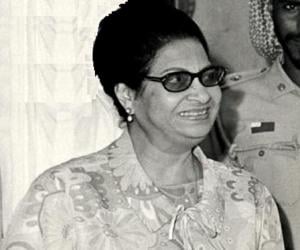


The wife of former Egyptian president Hosni Mubarak, Suzanne Mubarak was 17 when she got married. She got back to school a decade later and obtained degrees in sociology and political science. She established the Cairo Child Museum and worked for the UN.
A queen of the 18th Dynasty of Ancient Egypt, Nefertiti was the Great Royal Wife of Pharaoh Akhenaten. She and her husband reigned during a period marked by great prosperity in Ancient Egyptian history. Some scholars even claim that she reigned independently for some time following her husband’s death though this claim is a matter of debate.


Sobekneferu reigned as a pharaoh of ancient Egypt during the mid 18th century BC. She belonged to the Twelfth Dynasty of the Middle Kingdom and was the last ruler of the dynasty. One of the few Egyptian women to rule over the ancient civilization, Sobekneferu was also the first female ruler to adopt the full royal titulary.
Maathorneferure reigned as the queen of ancient Egypt during Ramesses II's rule. As the Great Royal Wife of the pharaoh, Maathorneferure enjoyed a luxurious life and demanded respect from her subjects. However, she was not influential in the court and had very little to contribute to state affairs.

Arsinoe IV reigned as the Queen of Egypt from 48 to 47 BC. She ruled alongside her brother Ptolemy XIII and was among the last surviving members of the Ptolemaic dynasty. Arsinoe IV is best remembered for her role in overseeing the famous siege of Alexandria in 47 BC against her half-sister Cleopatra VII Philopator.
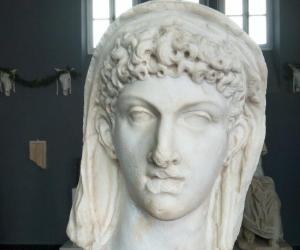
Ptolemaic princess Cleopatra Selene II, the only daughter of Queen Cleopatra VII of the Ptolemaic Kingdom of Egypt, was the Queen of Numidia and Mauretania through her marriage with King Juba II. Considered a leading royal lady of the early Augustan age, Selene had great influence in decisions made by the Mauretania government, particularly those related to trade and construction projects.
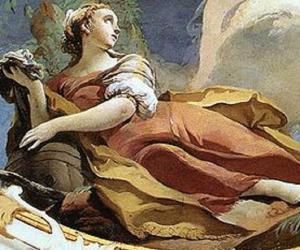
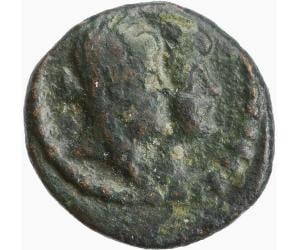
Cleopatra Selene of Syria served as the Queen consort of Egypt between 115 and 102 BC, during which she was first married to Ptolemy IX and then to Ptolemy X. She later served as the Queen consort of Syria from 102 to 92 BC, thanks to her marriages with Antiochus VIII, Antiochus IX, and Antiochus X.


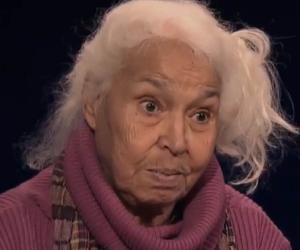
Nawal El Saadawi was an Egyptian feminist activist, writer, and physician. Described as Egypt's most radical woman, Saadawi wrote many books pertaining to the subject of women in the Muslim world. She is also credited with founding the Arab Women's Solidarity Association. Nawal El Saadawi won several prestigious awards, including the Seán MacBride Peace Prize and the Inana International Prize.
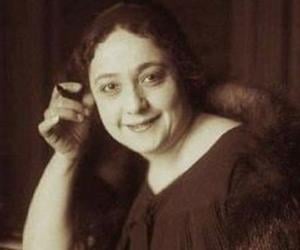

Mayar Sherif is an Egyptian professional tennis player who made history in 2020 when she became the first female player from Egypt to feature in a main draw of a Grand Slam by participating in French Open. She made headlines in 2021 when she became the first Egyptian female player to win a Grand Slam main-draw match at Australian Open.
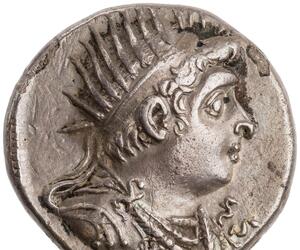
Cleopatra I Syra served as the Queen of Ptolemaic Egypt from 193 to 176 BC during which she was married to Ptolemy V Epiphanes, the King of Egypt. When her husband died in 180 BC, Cleopatra I became regent of Egypt and helped her son Ptolemy VI rule the kingdom until her own demise in 176 BC.


Once the First Lady of Egypt (as the wife of president Anwar Sadat), Jehan Sadat had a multicultural upbringing, being the daughter of an Egyptian father and a British mother. She later became a champion for women’s rights and transformed the civil rights laws, bringing in what were called Jehan's Laws.



Ancient Egyptian queen of the 4th dynasty, Hetepheres I was married to pharaoh Sneferu, or Soris. She came to be known as the Daughter of God during her father Huni’s reign. She was buried with full honor by her son, Khufu, though her mummy was desecrated by looters, and she was reburied later.

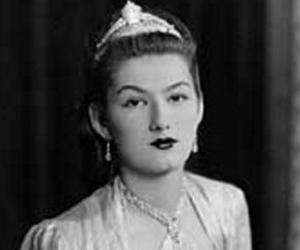

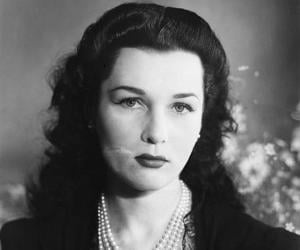

Catherine of Alexandria is a Christian saint who was martyred at the hands of the Roman Emperor Maxentius in the early 4th century. Catherine is generally credited with converting hundreds of people to Christianity. Over 1,100 years after her martyrdom, French warrior Joan of Arc claimed that Catherine was one of the saints to counsel her in her visions.
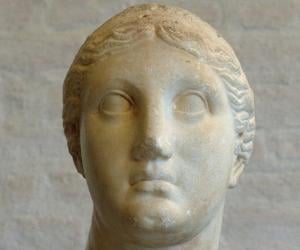
Berenice II was co-regent of Ptolemaic Egypt as the wife of the third pharaoh of Egypt's Ptolemaic dynasty, Ptolemy III Euergetes. An influential queen, Berenice participated actively in the political affairs of her kingdom. She was even included in the Ptolemaic state cult and was worshipped as a goddess. The constellation Coma Berenices is named after her.

Cleopatra V served as the Queen of the Ptolemaic Dynasty of Egypt. Although it is certain that Cleopatra V was the only attested wife of Ptolemy XII, she remains an enigmatic member of the Ptolemaic dynasty due to the lack of information and the poor body of source material available today.

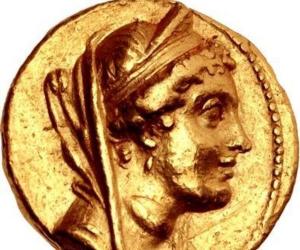
Cleopatra Thea, a Ptolemaic princess, was the daughter of Greek king Ptolemy VI. She later became a Seleucid queen, through her marriage to Alexander Balas. She later also married Demetrius II Nicator and Antiochus VII Sidetes. She co-ruled with Antiochus VIII Grypus but was forced to commit suicide by him later.
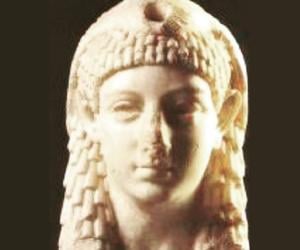
The eldest daughter of Egyptian king Ptolemy XII Auletes, Berenice IV, reigned as queen after his father’s exile and mother’s death. However, when Ptolemy was about to be restored, the Alexandrians got Berenice married to Archelaus. Ptolemy killed Berenice and all her followers after his return.
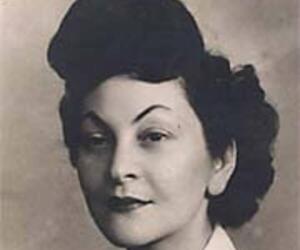
Doria Shafik was an Egyptian poet, editor, and feminist. One of the most important and influential leaders of the famous women's liberation movement in Egypt, Doria Shafik is best remembered for her work in the mid-1940s that led to a change in the Egyptian constitution, granting Egyptian women the right to vote.
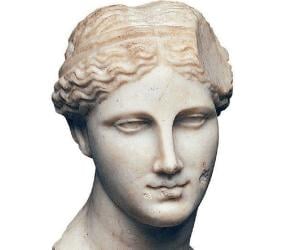
Arsinoe II of Egypt was a Ptolemaic queen who ruled over the Ptolemaic Kingdom of ancient Egypt from 277 to 270 BC through her marriage to Ptolemy II Philadelphus. Arsinoe was an influential queen and had her own cult and towns dedicated to her. She also played a key role in her husband's success in the First Syrian War.

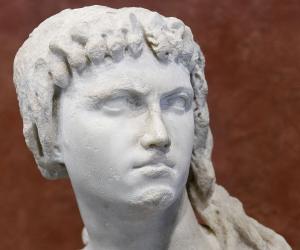
An Egyptian queen of the Ptolemaic dynasty, Cleopatra II was the daughter of Ptolemy V and Cleopatra I. After her parents’ death, she was married off to her own brother, Ptolemy VI Philometor. After Ptolemy VI’s death, she married her younger brother, Ptolemy VIII Euergetes II.
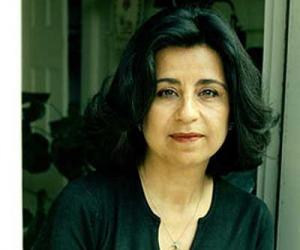
Ahdaf Soueif is an Egyptian cultural and political commentator and novelist. She is best known for her second novel The Map of Love, which has been translated into over 20 languages. The book was also nominated for the prestigious Man Booker Prize. Ahdaf Soueif is also the recipient of the Cavafy Award and Mahmoud Darwish Award.
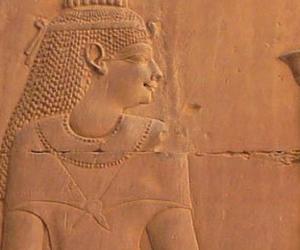
Egyptian queen Cleopatra III initially co-ruled with her husband, Ptolemy VIII Euergetes II, and her mother, Cleopatra II. While she was betrothed to her uncle, Ptolemy VIII, as an infant, Ptolemy VIII later married her mother instead, and began to rule. He married Cleopatra III much later.

Berenice III, also known as Cleopatra Berenice, was the daughter of Cleopatra Selene and Ptolemy IX Soter. She had initially reigned as queen, as the wife of her uncle, Ptolemy X Alexander I. She also ruled as co-regent with her father and then with her half-brother/husband, Ptolemy XI Alexander II.


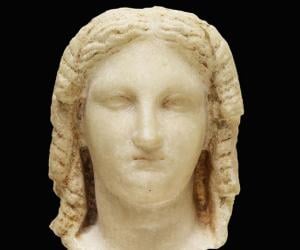
The daughter of Ptolemy III and Berenice II, Arsinoe III of Egypt was married to her brother, Ptolemy IV, and was the first Ptolemaic queen to have a child with her own brother. She also actively accompanied her brother to his campaign against Antiochus the Great in Palestine.
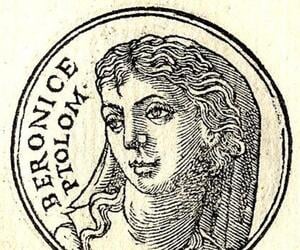
Berenice I was the 2nd queen of the Egyptian Ptolemaic dynasty and the wife of Ptolemy I Soter. Her first marriage was to a nobleman named Philip and a fake genealogy was made before her 2nd marriage, since she was of non-royal birth. She was also the mother of pharaoh Ptolemy II Philadelphus.

